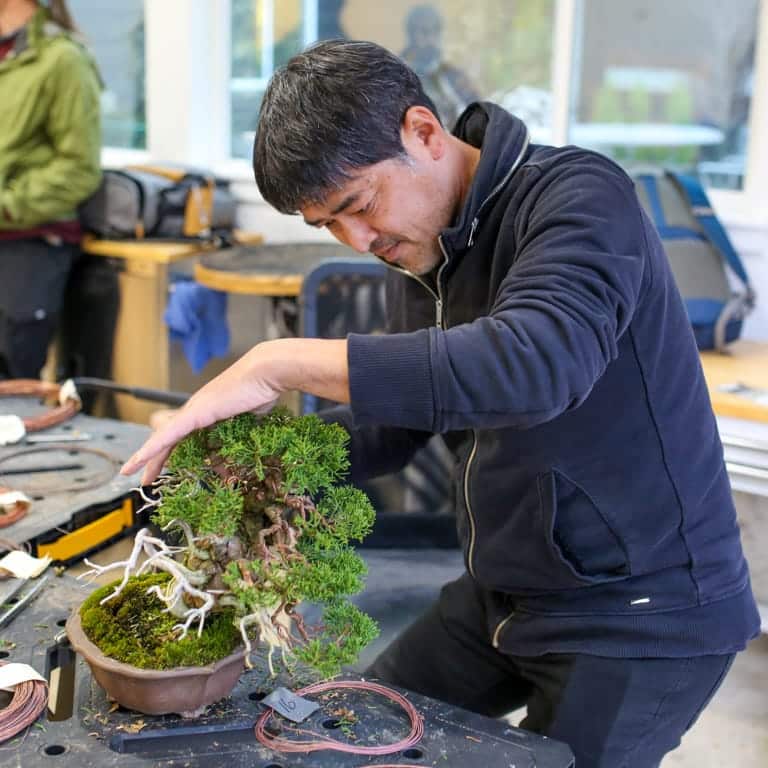Keying off last week’s theme, I wanted to share tips for workshop leaders. How does one host a successful workshop?
- Respect your students’ time.
- Clean the workshop and set up workstations before participants arrive.
- Try to the best of your ability to provide roughly equivalent time with each student. This is a perennial challenge for a variety of reasons – give it your best effort and try to improve over time.
- Not everyone can stay late after the workshop ends – provide warning near the end of the session so people can clean their workstations and head out in a timely fashion.
- Set clear expectations about who will do what.
- Some students want to do all of the work on their trees. Others bring trees to be worked on by the workshop leader. Both approaches can work well when expectations are clear.
- Don’t make irreversible design decisions without consulting the student who brought the tree. Even when instructors believe they are “right,” making hasty or unilateral decisions (like removing a key branch) can lead to ill will.
- Respect your students’ trees.
- Don’t feel pressure from students to work on trees that you deem to be weak or require some form of recovery before styling can continue. If the student is open to it, feel free to explain your perspective without overdoing it.
- Don’t pressure yourself to make changes that make the tree look different but not necessarily better. Encourage students to participate in finding the best design for the tree.
- Listen.
- It’s easy to offer unsolicited advice. Impress students by supporting their goals for their trees.
- Be flexible.
- There are often multiple ways of performing a technique or reaching a goal. Be open to helping students learn or practice techniques that differ from your standard approach.
- Be patient, and remember that bonsai is fun!
- Every form of teaching has its challenges, and every student has their limits. The workshop is the student’s time to do focused work on their trees. It’s OK if they do it at their own pace.
- Although everyone struggles with their trees at one time or another, there can be great joy in overcoming shared challenges. Find ways to keep the mood positive before the workshop becomes too intense.

Daisaku Nomoto working on a shimpaku juniper
There are lots of ways in which workshop leaders can instruct and inspire their students to do great work – share your tips in the comments below!
